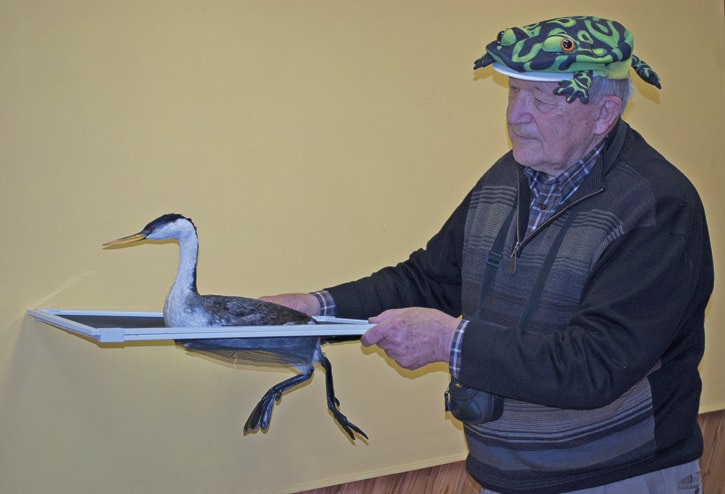It’s a dream come true, of sorts.
While local naturalists would never hope for the untimely death of a Western Grebe, having one of the waterbirds in place among the taxidermy displays now in place at the Brighouse Nature Centre at Marine Park has been a long-time wish.
“We’ve been wanting one for 20 years,” says Tom Brighouse, for whom the nature centre is named.
When naturalist Monica Dahl spotted a lifeless bird floating in the water near the marina, the hope of having a grebe available for the public to more closely peruse became a possibility.
The bird was frozen and then given to taxidermist Richard Hill in Kamloops.
Over the winter the painstaking work was completed, including ordering a replica of the grebe’s red eye from London.
The stuffed Western Grebe, complete with its strong legs and large feet normally underwater, can now be viewed at the nature centre.
Brighouse, who has visited other centres in western Canada and the U.S., has not seen another one.
Regarding the possible causes of death of this local grebe, it’s difficult to pinpoint. Brighouse says the birds can sometimes be stabbed in the gullet when they consume fish bones. One of the precautions grebes take with their young to prevent this is to feed them down feathers.
“It’s like telling children, eat your sweater,” he smiles.
The Shuswap Naturalist Club site at www.shuswapnaturalists.org/grebes.htm explains that Salmon Arm Bay is the site for most of British Columbia’s breeding Western Grebes.
“Every spring the grebes return in April to explore the bay. At that time the lake water levels are low. But that changes throughout May, and by mid-June the water levels generally peak. Courtship, involving preening, gift giving and dancing on the water, begins in late April and may still be in progress well into June. Young grebes begin to appear around the end of June or early July, riding on the parents’ backs and swimming with them.”
The website notes the grebes can be witnessed from shore using binoculars from Peter Jannink Nature Park, the walkway in front of the Prestige Harbourfront Resort or at Christmas Island.
